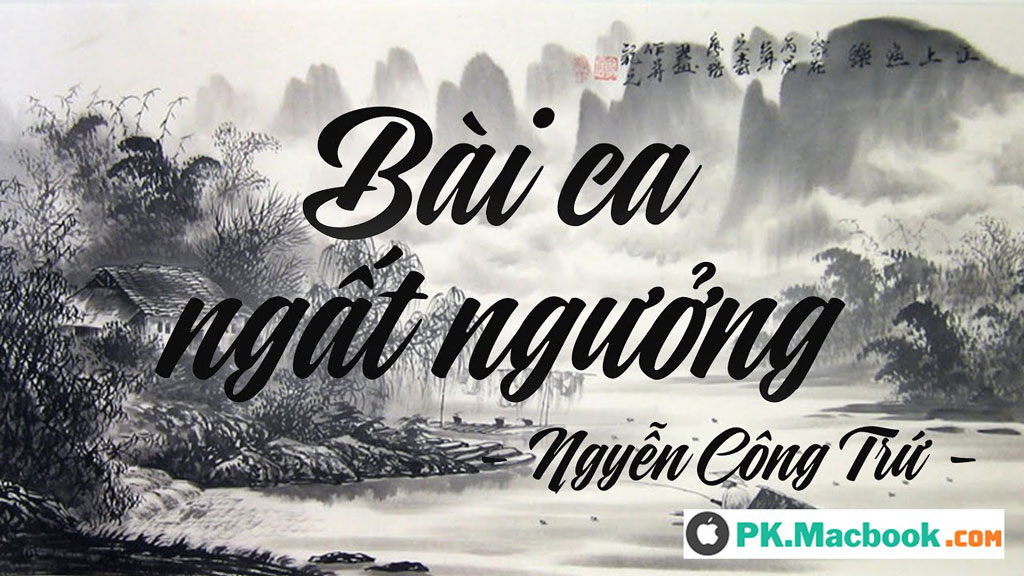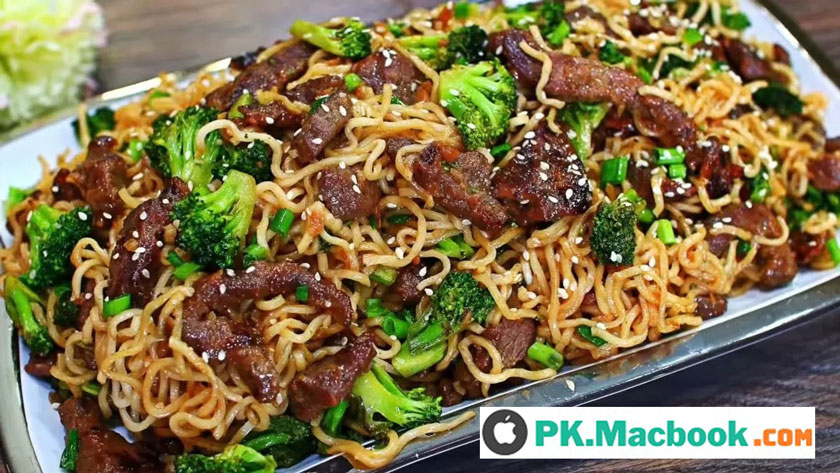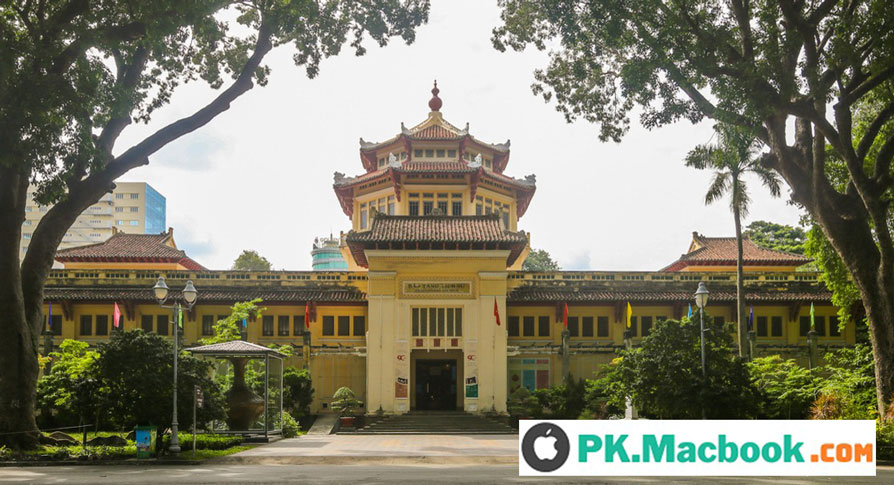Tin tức
Bún riêu cua xí quách
1. Gỏi cuốn: spring rolls
20 món ăn Việt Nam bằng tiếng Anh
Spring rolls or summer rolls are a Vietnamese delicacy known as “gỏi cuốn”. Depending on region, salad rolls were made differently. Some vegetarian families make vegetarian spring rolls rather than meat spring rolls. However, the typical ingredients include slivers of cooked pork (most often pork sausages), shrimp, sometimes chicken or tofu, fresh herbs like basil or cilantro, lettuce, cucumbers, sometimes fresh garlic, chives, rice vermicelli, all wrapped in moistened rice paper. A typical “gỏi cuốn” may contain boiled pork, boiled rice noodle, cucumber, carrot and herb only. Fresh Vietnamese spring rolls can be made at home or found at Vietnamese restaurants and some grocery stores. They are served at room temperature with dipping sauce. “Nước chấm, tương xào”, or a hoisin peanut sauce are all common dipping sauces. A typical hoisin dipping sauce includes chili, hoisin sauce, peanut butter and sugar. A standard “nước mắm pha/nước chấm” dipping sauce is composed of fish sauce, lime, garlic, sugar, and chilies or simply fish sauce, sugar and vinegar.Bạn đang xem: Bún riêu cua tiếng anh là gì
2. Mì vịt tiềm: special duck and egg noodle soup
Vietnamese Duck and Egg Noodle Soup (Mi Vit Tiem) borrows heavily from Vietnam’s northern neighbor. A Vietnamese favorite with Chinese origins, Mì Vịt Tiềm is composed of fresh egg noodles, shiitake mushrooms, watercress, and a braised duck leg quarter. The duck is braised in a mix of spices creating a rich flavorful broth for the noodles. Condiments include hot mustard, and pickled green papaya and carrots.Unlike phở, which most Viet home cooks know how to make, mì vịt tiềm is usually left to the pros. The trick is cooking the duck legs until tender (but not mushy), mahogany brown, and deeply seasoned.
Bạn đang xem: Bún riêu cua tiếng anh là gì
3. Phở: pho
Phở or pho is a Vietnamese soup consisting of broth, rice noodles, herbs, and meat – usually beef, sometimes chicken. Pho is a popular street food in Vietnam and served in restaurants around the world.
Pho originated in the early 20th century in northern Vietnam, and was popularized throughout the world by refugees after the Vietnam War. Because pho”s origins are poorly documented, there is disagreement over the cultural influences that led to its development in Vietnam, as well as the etymology of the name. The Hanoi (northern) and Saigon (southern) styles of pho differ by noodle width, sweetness of broth, and choice of herbs.
4. Xôi: steamed sticky rice
Sticky rice is a sweet or savory Vietnamese dish made from glutinous rice and other ingredients. Although it is often served as a dessert, in many mountainous areas in Vietnam, like the Central Highlands mountains in northern Vietnam, people eat xôi as a main dish. Xôi is a common on-the-go breakfast item, and a popular snack nationwide.
“Xôi”; or “glutinous rice”, “sweet rice”, “sticky rice” in English; can be found in many Asian dishes, especially in the South East Asia areas. To cook “xôi”, Vietnamese often soak the glutinous rice for around four hours until the grains have absorbed enough water. Then, the rice will be drained and steamed dry so that the grains can remain as the whole, soft but not mushy, sticking together in a lump.
“Xôi” can be eaten at any time of the day, but typically, Vietnamese often choose it as a cheap and scrumptious dish for their morning meal.

20 món ăn Việt Nam bằng tiếng Anh
5. Rau muống: garlic water spinach
20 món ăn Việt Nam bằng tiếng Anh
From spinach, the easiest way is to boil it. And depending on the region, people can eat with fish sauce, soy sauce, colander, and shrimp sauce. Boiled water of water spinach is often used by Vietnamese people to mix with lemon after a meal.
Besides boiled spinach, there are also many different way of cooking this vegetable such as making salad with pounded roasted peanuts, vinegar, sugar, garlic, chili or frying water spinach with garlic and cooking it with the crab soup or taro crab soup or hotpot chicken instead of other vegetables. It is also often seen that chopped spinach is eaten raw with other aromatic herbs. Each way has its own flavor and preferences depending on the region and each region.
6. Bún ốc: rice noodles with snails
To prepare a delicious “bún ốc”, makers have to be careful to choose a good snail that is very fat and not soaked in the water too long. Then they choose the best rice noodle. Spices for “bún ốc” include many things, including tomato, vinegar, oil, pepper, salt, sugar and many kinds of aromatic vegetables together with salad and banana flowers in small slices.
Cooked snails are arranged neatly in a bowl of bun with fried tofu and fresh herbs, and the dish is finished with a hot, sweet and sour broth that is poured over all of the cold ingredients. Finally, a few slices of cooked tomatoes are placed on top.
7. Bún chả: rice noodles with barbecue pork
“Bún chả” is a Vietnamese dish of grilled pork and noodle. “Bún chả” is served with grilled fatty pork over a plate of white rice noodle and herbs with a side dish of dipping sauce. Bún chả originated and remains very popular in Hanoi. Outside Hanoi, across all regions of Vietnam, a similar dish of rice vermicelli and grilled meat called bún thịt nướng is alternately served.
“Bún chả” is made up of many ingredients, which include : meat – minced pork shoulder to make meatball, pork belly; rice vermicelli; dipping sauce – diluted fish sauce with sugar, lemon juice, vinegar, stock, crushed garlic, chilli, etc; pickled vegetables – green papaya and carrot; fresh herbs – cabbage, basil, rice paddy herb, beansprout, Vietnamese balm and side dishes – crushed garlic, crushed chilli, vinegar, grinded pepper, sliced limes.
8. Bún riêu: fresh-water crab soup
“Bún riêu” is a traditional Vietnamese soup of meat and rice vermicelli. There are several varieties of “bún riêu”, including bún riêu cua, bún riêu cá, and bún riêu ốc. This dish is well-known in the country and in the world.
“Bún riêu cua” is served with tomato broth and topped with freshwater crab. In this dish, various freshwater paddy crabs are used, including the brown paddy crab found in rice paddies in Vietnam. The crabs are cleaned by being placed in clean water to remove dirt and sand. The crabs are pounded with the shell on into a fine paste. This paste is strained and the crab liquid is a base for the soup along with tomato. The crab residue is used as the basis for crab cakes. Other ingredients for this dish include tamarind paste, fried tofu, rice vinegar, annatto seeds to redden the broth, congealed pig”s blood, split water spinach stems, shredded banana flower, spearmint, perilla and bean sprouts. This dish is rich in nutrition: calcium from the ground crab shells, iron from the congealed pig”s blood, and vitamins and fiber from the vegetables.
“Bún riêu” has a fresh sour flavor, so Vietnamese like to enjoy it in summer.

20 món ăn Việt Nam bằng tiếng Anh
9. Cà phê sữa nóng/ sữa đá: hot Vietnamese coffee / Vietnamese coffee with ice
20 món ăn Việt Nam bằng tiếng Anh
Vietnamese coffee is almost always drip coffee. Go out to any Vietnamese street coffee stall and you”ll find rudimentary aluminium drip filters and cups of exquisitely aromatic black coffee underneath. The Vietnamese like their coffee nice and slow, and setting up the filter and choosing right time to drink is an art in itself. Drip coffee is very thick, and the coffee bean is usually intentionally over-roasted, making it quite bitter. A frequent way to enjoy this is with condensed milk and ice “cà phê sữa đá”, and it naturally maintains a strong taste – everything is condensed in this cup, even the water! Drip coffee is the way Vietnamese people create and enjoy conversation.
A strong taste, a thicker brew and a few over-roasted beans makes for a different, distinctive taste. Whether it is delicious or not is subjective – a lot of my American friends who grew up with Arabica and cream dislike the heavily strong taste of Vietnamese-style coffee, but I”ve known people who swear by it. The massive strength of the coffee style here (both in popularity and in taste) forced the Vietnamese Starbucks to adapt, not the other way round! To us, it is simply too bland, too sour (despite Arabica”s “lower acidity”), too unimpressive.
10. Chả cá: fish cake
“Chả cá chiên” are fried fish pastties served as a snack, between Vietnamesei “bánh mì” sandwiches, between lettuce leaves or in the udon noedle soup “Bánh canh”. It takes some time to make them, the multi-applicability of the fish cakes is the reward for all the work. They can also be freezed, which is especially easy with noodle soups or to pimp ready made noodle packages at any time. The fish of fish cake can be minced roughly or finely to determine the desired structure of the fish cakes.
11. Bánh cuốn: rice-flour rolls
The rice sheet in bánh cuốn is extremely thin and delicate. It is made by steaming a slightly fermented rice batter on a cloth that is stretched over a pot of boiling water. It is a light dish, and is generally eaten for breakfast everywhere in Vietnam.
Xem thêm: “Bộ Bí Kíp” Cách Làm Sao Để Cô Bé Nhiều Nước Hoàn Hảo Khiến Nàng “Đê Mê”
12. Bánh mì: Vietnamese sandwich
“Bánh mì” or “banhmi” is the Vietnamese word for bread. In Vietnamese cuisine, it also refers to a type of baguette which is often split lengthwise and filled with various savory ingredients as a sandwich and served as a meal. Plain bánh mì is also eaten as a staple food.
A typical Vietnamese sandwich is a fusion of meats and vegetables from native Vietnamese cuisine such as pork sausage, coriander leaf (cilantro), cucumber, pickled carrots, and pickled daikon combined with condiments from French cuisine such as pâté, along with chili and mayonnaise. However, a wide variety of popular fillings are used, from meat ball to ice cream. In Vietnam, sandwiches are typically eaten for breakfast or as a snack; they are considered too dry for lunch or dinner.

20 món ăn Việt Nam bằng tiếng Anh
13. Bánh xèo: pancake
20 món ăn Việt Nam bằng tiếng Anh
“Bánh xèo”, literally “sizzling pancake”, named for the loud sizzling sound it makes when the rice batter is poured into the hot skillet, it is a Vietnamese savory fried pancake made of rice flour, water, and turmeric powder. It is stuffed with individual preferences, and served vegetarian or with meat. Some common stuffings include: pork, shrimp, diced green onion, mung bean, and bean sprouts.
“Bánh xèo” is also served with lettuce, mint, Thai basil, and fish mint.
14. Bia hơi: fresh beer
The three most popular beer producers in Vietnam are: Sabeco Brewery, which produces Saigon Beer and 333 Beer; Vietnam Brewery Ltd, a joint-venture of Heineken Asia Pacific and Saigon Trading Group (Satra), which produces Heineken, Tiger Beer and Larue Beer; and Habeco, which produces Hanoi Beer and Truc Bach Beer. Out of those three, Saigon Beer is the most popular, according to data from 2013. One of their trademark beers is the 333 Lager. Other popular breweries include Hue Brewery Ltd, which produces Huda Beer and Dai Viet, which is the only commercial brewery in Vietnam that produces black beer.
Popular international breweries include Tiger, Carlsberg, and Heineken. Heineken and Tiger beers together dominate the Vietnam premium beer segment with approximately 85% of the market share. Vietnam is the largest market in the world for Tiger and Heineken Asia Pacific.
15. Bánh bao: steamed wheat flour cake
“Bánh bao” literally translates to “cakes that wrap something” in Vietnamese. The dough is made of flour, milk, sugar and a hint of oil. Once the dough rises, it”s formed in the desired shape, usually dumplings similar to a pointy turban, then steamed until plump and perky. In general, they”re stuffed with savory meat or sweet egg custard (called bánh bao cadé).
Vietnamese Steamed Pork Buns, or Bánh Bao, are fluffy savory buns made with ground pork, mushrooms, hard boiled eggs and Chinese sausages. It”s simple and delicious on-the-go food
16. Nem rán/chả giò: spring roll
Fried spring roll was brought to Hanoifrom the Southern part of Vietnam and this dish has rapidly become a favorite one of Hanoian, and to express the affection as well as to remember the real origin of the dish, people here call it “Nem Sai Gon”.
Unlike popular myth, Vietnamese do not eat fried spring rolls with rice everyday. In fact it is a preferred food on special occasions such as Tet and other family festivities. Spring rolls not always go along with rice but also seen with round noodle in the mouth-watering “bún nem” dish.
Ingredients used for the fried spring roll are different depending each local but usually it comprises of lean minced pork, sea crabs or unshelled shrimps, edible mushroom, dried onion, duck/chicken eggs, pepper, salt and different kinds of seasoning. Whichever they are, all ingredients are mixed thoroughly before being wrapped with rice paper into small rolls. These rolls are then fried in boiling oil. The cooked rolls are usually garnished with fresh lettuce and herbs.

20 món ăn Việt Nam bằng tiếng Anh
17. Bún bò Huế: spicy beef noodle soup
20 món ăn Việt Nam bằng tiếng Anh
“Bún bò” originated in Huế, a former capital of Vietnam. Outside the city of Huế and some parts of central Vietnam, it is called “bún bò Huế” to denote its origin. Within Huế and surrounding cities, it is known simply as “bún bò”. The broth is prepared by simmering beef bones and beef shank with lemongrass, and then seasoned with fermented shrimp sauce and sugar for taste. Spicy chili oil is added later during the cooking process.
“Bún bò” usually includes thin slices of marinated and boiled beef shank, chunks of oxtail, and pig”s knuckles. It can also include cubes of congealed pig blood, which has a color between dark brown and maroon, and a texture resembling firm tofu.
“Bún bò” is commonly served with lime wedges, cilantro sprigs, diced green onions, raw sliced onions, chili sauce, thinly sliced banana blossom, red cabbage, mint, basil, perilla, Vietnamese coriander, saw tooth herb and sometimes mung bean sprouts. Thinly sliced purple cabbage is acceptable substitute when banana blossoms are not available. Purple cabbage most resembles banana blossom in texture, though not in taste. Fish sauce and shrimp sauce are added to the soup according to taste. Ingredients might be varied by regions due to their availability.
18. Nộm/gỏi: sweet and sour salad
“Gỏi” (“Nộm” in Northern Vietnam) is the indigenous salad of Vietnamese cuisine. It is to be distinguished from sa lát (from the French for salad), and sa lát Nga found in Western style restaurants.
This salad is a combination of a variety of fresh vegetables, grated turnip, kohlrabi, cabbage, or papaya, and slices of cucumber often with meat – either grated, boiled, lean pork, beef, shrimp or small fry. Other ingredients and condiments include spice, herbs, and peanut. The salad is mixed, soaked in vinegar, sugar, garlic, pepper, and seasoned with salt.
One of the best known is Gỏi gà – chicken salad. Other varieties include salad, dried beef salad, the popular papaya salad and prawn salad and local specialities such as rice-paddy eel salad.
19. Phở cuốn: stuffed pancake
“Phở cuốn” translates to noodle roll, which makes sense since each “phở cuốn” is a big rice noodle rolled around beef and green herbs like cilantro and basil. We dipped each roll in a bowl of “nước chấm”, a sweet dipping sauce with a fish sauce base and flavors like sugar, vinegar and chili.
“Phở cuốn” was made by accident when a few hungry late night revelers when to a small restaurant in Ngu Xa Village to eat Pho. The restaurant went out of broth. The men didn’t want to move on so she suggested she would use the square slices of uncut Pho and make some rolls with the leftovers.
20. Sườn xào chua ngọt: sweet and sour pork ribs
Sweet and sour ribs is one of most favorite dishes of Vietnamese people. Although this way of cooking will change depending on the region, the common feature of this dish is that it is very suitable to eat with white rice. With an explosion of flavors, this dish is a combination of many spices, and the taste of “sườn xào chua ngọt” is also very attractive because it harmonizes the sourness of fresh lemon, kumquat, pineapple and flavor. Sweet from brown sugar or honey. So it is completely understandable that this is such a great side dish for rice.
Và trên đây chính là 20 món ăn hấp dẫn của Việt Nam khi được dịch sang tiếng Anh. Hy vọng bài viết này có thể góp phần giúp bạn hiểu rõ hơn về nền ẩm thực phong phú và đặc sắc của Việt Nam, cũng như có thể tăng phần nào vốn từ vựng của bạn về chủ đề “Ẩm thực” này nhé!
Để có thể biết thêm nhiều thông tin cũng như các bài viết thú vị về tiếng Anh, mời các bạn hãy nhanh tay truy cập vào các đường link bên dưới để có thể xem được những bài viết cũng những các tips học tiếng Anh hay ho mà anhchien.vn mang lại!
Bí Quyết nấu BÚN RIÊU không cần cua đồng vẫn Thơm Ngon Chuẩn Vị | Amazing Crab Noodle Soup
Bài viết cùng chủ đề:
-
Ý nghĩa của những hình xăm mang thông điệp tài lộc, may mắn
-
Giáo án bài ca ngất ngưởng soạn theo định hướng phát triển năng lực
-
Top 5 giống mèo cảnh giá rẻ dưới 500k mà bạn nên mua –
-
Cảnh 18+ gây xấu hổ thời còn vô danh của địch lệ nhiệt ba: chủ động khỏa thân trước mặt bạn diễn nam
-
Tướng mắt tứ bạch
-
Top 50 hình xăm ở bắp tay đẹp nhất
-
2, 3 con mực là gì?
-
Các dấu hiệu chàng không thích bạn !, 42 dấu hiệu chàng thích bạn nhưng không nói ra
-
Review top 20 truyện ngôn tình hiện đại h nặng hay nhất 2021
-
Làm vỡ gương có điềm báo gì, có sao không? có nên vứt gương vỡ?
-
Zumba là gì? nhảy zumba có tác dụng gì đối với sức khỏe?
-
Top 30+ bộ truyện đam mỹ hay nhất năm 2021
-
Cách làm mì tôm sống ngon
-
Thuyết minh về bảo tàng lịch sử việt nam tại thành phố hồ chí minh
-
Hình xăm chữ dọc sống lưng cho nữ đẹp ❤️ ý nghĩa nhất
-
Các cơ sở của đại học mở hà nội, trường đại học mở hà nội
















